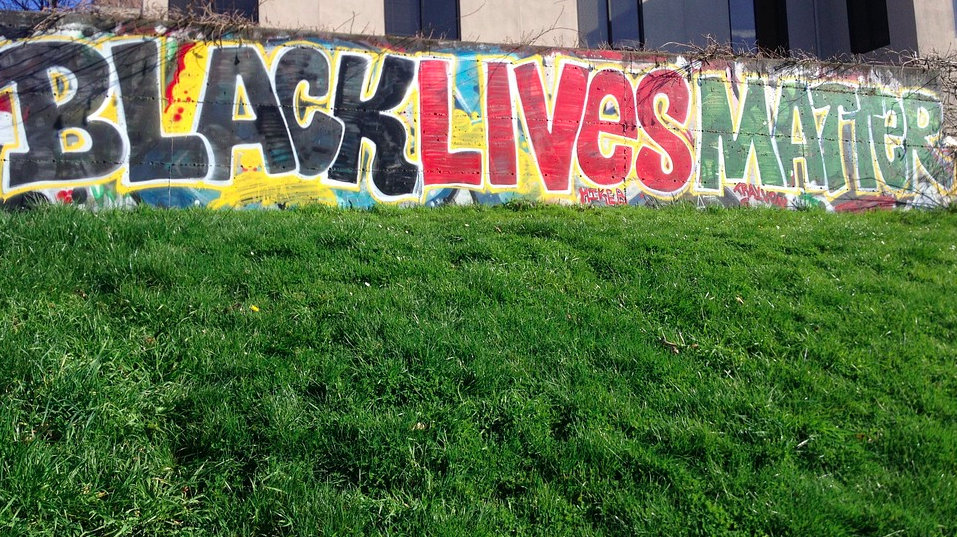5 Steps to Make Your Company’s Commitment to Justice a Reality
“Diversity and Inclusion isn’t good enough.” This sentiment has proliferated in the charged months following the murders of George Floyd, Breonna Taylor, and Ahmaud Arbery. The protests over their deaths catapulted longstanding issues of racism and injustice back to the fore of our national conversation. As dozens of companies took the unprecedented move to speak out against police brutality and affirmed that #BlackLivesMatter, employees and consumers moved to hold these companies accountable for their role in perpetuating systemic racism and inequality.
“If Black Lives Matter, then why doesn’t your leadership team have any Black representation?”
“If we stand against systemic and widespread police brutality, why do we sell our products to police departments?”
In response to the suddenness and intensity of this pressure, corporate leaders looked to their Diversity, Equity & Inclusion programs for answers but found few. Many companies had recently downsized DE&I programs in response to the Covid-19 pandemic and reassigned DE&I professionals to focus on managing the shift to a virtual workforce. The remaining scaled-down programs were limited to advocating for incremental changes in hiring, sharing information and resources for self-education, and planning virtual events with Employee Resource Groups.
Diversity, Equity & Inclusion programs as they exist today aren’t able to create the anti-racist companies employees and consumers want. To create truly anti-racist companies, leaders need to dig deeper. Here’s a guide on how, starting from this moment of crisis.
1. Recognize that symbolic or one-time actions are crisis control, not solutions.
The outpouring of public statements from companies and their CEOs on public media and in company-wide emails shows that companies recognize the intensity of this moment in time. Making Juneteenth a company holiday, as many companies have done, is a symbolic gesture to show that companies recognize their Black employees. Company-wide conversations and unconscious bias training are signals that companies are willing to get vulnerable, court conflict, and introspect.
Know that none of these actions will create an anti-racist company. What they will do is raise awareness and inspire hope that companies will make a change. In that respect, they are an essential first step. Unless you want to destroy the trust your company has built, this cannot be the only step.
2. Create a working group or cross-functional team to guide and implement the process of long-term change on top of ongoing DE&I work.
Diversity, Equity & Inclusion roles within most companies are frequently over-scoped and under-resourced, with a handful of employees saddled with the Sisyphean task of “making the company more diverse, equitable, and inclusive.” Herein lies one of the fundamental paradoxes of DE&I work: how can a company reconcile the fact that everyone should own responsibility for DE&I with the fact that without dedicated DE&I roles, advocates are forced to work without pay or recognition? One answer to this question involves establishing a working group or cross-functional team tasked with guiding the direction and implementation of anti-racist changes across the company.
Design this working group to ensure that it includes decision-makers with authority, representatives spanning different business units and employee communities, and experts and advocates with needed skills and networks. For example, your working group may include the CEO, Head of People, a DE&I Program Manager, Directors from Marketing, Sales, Product, and Engineering, an external consultant, and rotating seats for passionate advocates from anywhere in the company.
To support this group within the organization, design incentives that reward continued contribution to this initiative. Allow participation and achievement within this group to be considered as part of employees’ performance reviews. Have senior leaders publicly recognize and praise the work of this group. Ask members of this group to publish their reports and present them at conferences on their work.
It’s important that this group supplement, but not replace, existing Diversity, Equity, and Inclusion efforts. Doing so ensures a more sustainable distribution of responsibility and accountability for change across the organization. It allows employees within DE&I roles to resist the scope creep that is common in many companies.
3. Develop a shared vision and understanding of what anti-racism looks like.
Work broadly and deeply to understand how employees and customers envision your company’s anti-racist future. Ask yourself and all your company’s constituencies these questions as you engage in this process, which can be supplemented via town halls, surveys, focus groups, and your anti-racism working group or cross-functional team.
“In an anti-racist future…
- …what should the experiences of people of color be in this company?”
- …what should the experiences of White people be in this company?”
- …what is happening now in this company that should no longer happen?”
- …what isn’t happening now in this company that needs to happen?”
- …what should the experiences of people of color in the world?”
- …what should the experiences of White people be in the world?”
- …what is happening now in the world that should no longer happen?”
- …what isn’t happening now in the world that needs to happen?”
- …what impact should the company have on the world, and why?”
The goal of this process is to arrive at a clear and compelling vision that everyone, especially senior leaders, feels inspired by and excited to own.
4. Make and implement a strategic plan to achieve your vision.
Make heavy use of your working group or cross-functional team and engage in long-range strategic planning around your company’s vision for anti-racism. Ensure that corporate mission statements and core values are aligned with this vision and rewrite them if they aren’t. Anticipate how the company’s strategic plan for anti-racism might interact with its other future-oriented strategic plans (for example, related to industry trends, national and global politics, demographic changes, digitization, and artificial intelligence) and plan accordingly.
Within companies, culture takes the longest to change, followed by shared practices and processes. The goal of foundation-laying isn’t to achieve these kinds of changes immediately, but to prepare the organization to make consistent progress on these changes further down the line. Examples of immediate actions that result in future payoffs include: creating new full-time DE&I roles, expanding benefits and writing a new policy, funding working groups and DE&I initiatives, bringing on a DE&I firm or consultancy, creating a company-wide set of DE&I goals, metrics, and timelines, and tying bonuses to progress toward these goals.
Outside of the organization, give weight to your public statements by walking the talk. End relationships with customers and partners that don’t embody your vision or values, and build new relationships with those that do. Donate, but with the tactical understanding that charitable giving is but one of many strategies to drive change, and not just a PR stunt.
5. Do the anti-racist work, iterate, and improve.
The hardest work happens when the media attention moves on. What differentiates organizations that are genuinely committed to doing right by their employees and the world from those that are only interested in maintaining appearances is what they do when the moment passes and tensions simmer down. The work that happens here is the most important of all. What does it look like?
- It looks like continuous surveys to stay on top of your company culture as it evolves.
- It looks like maintaining the ability of all your leaders to be champions and custodians of the company’s mission and values, even through turnover and leadership succession.
- It looks like assessing the impact of your working group every year and tweaking its composition, incentives, and goals to do better.
“Anti-racism” is a commitment and an outcome, not an award. To that end, we can’t have truly anti-racist organizations until we have a truly anti-racist world. That’s reward enough to do this work.



